3DO
 | |
 The first 3DO machine, Panasonic FZ-1 R.E.A.L. 3DO Interactive Multiplayer | |
| Developer | The 3DO Company |
|---|---|
| Manufacturer | Panasonic,Sanyo,GoldStar,Creative Technology |
| Type | Home video game console |
| Generation | Fifth generation era |
| Release date | |
| Lifespan | 1993–1996 |
| Introductory price |
|
| Discontinued | 1996 KOR:c. 1998 |
| Units sold |
|
| Media | CD-ROM |
| CPU | 32-bitcustomARM CPU(ARM60) @ 12.5 MHz[3] |
| Memory | 2 MBRAM,1 MBVRAM |
| Storage | 32 KBSRAM |
| Display | 320×240 @ 60 Hz, 384×288 @ 50 Hz; 16-bit palettized color (from 24-bit) or 24-bit true color. |
| Graphics | Panasonic FZ-1 "Madam" graphics accelerator |
| Sound | Panasonic FZ-1 "Clio" DSP: 16-bit stereo @ 44.1 kHz, 4-Channel Dolby Surround; |
| Online services | Planned but canceled[4] |
| Best-selling game | Gex,over 1 million[5][6][note 1] |
| Successor | Panasonic M2(canceled) |
3DOis avideo gaminghardware format developed byThe 3DO Companyand conceived by entrepreneur andElectronic ArtsfounderTrip Hawkins.[8][9][10]The specifications were originally designed byDave NeedleandRJ Micalof New Technology Group, and were licensed by third parties; most hardware were packaged ashome video game consolesunder the nameInteractive Multiplayer,andPanasonicproduced the first models in 1993 with further renditions released afterwards by manufacturersGoldStar,Sanyo,Creative Labs,andSamsung Electronics.
Centered around a 32-bitARM60RISC-type processor and a custom graphics chip, the format was initially marketed as amultimediaone but this had changed into a solely video gaming within a year of launching.[10]Despite having a highly promoted launch (including being namedTimemagazine's "1993 Product of the Year" ), the oversaturated console market and the system's mixed reviews prevented it from achieving success comparable to competing consoles fromSegaandSony,rendering its discontinuation by 1996. In 1997, The 3DO Company sold its "Opera" hardware toSamsung,[11]a year after offloading itsM2successor hardware to Panasonic.
History
[edit]Conception
[edit]The 3DO format was originally conceived byThe 3DO Company,founded on September 12, 1991 byElectronic ArtsfounderTrip Hawkins.The company's objective was to create a next-generation, CD-based video game/entertainment standard which would be manufactured by various partners and licensees; 3DO would collect a royalty on each console sold and on each game manufactured. Togame publishers,the lowUS$3royalty rate per game was a better deal than the higher royalties paid toNintendoandSegawhen making games for their consoles. The 3DO hardware itself was designed byDave NeedleandRJ Mical(designers of theAmigaandAtari Lynx), starting from an outline on a restaurant napkin in 1989.[12]Trip Hawkins was a long-time acquaintance of Needle and Mical and found that their design very closely fit his philosophy for architecture and approach, so he decided that: "Rather than me start a brand new team and starting from scratch it just made a lot of sense to... join forces with them and shape what they were doing into what I wanted it to be."[12]
Licensing model
[edit]The 3DO Company lacked the resources to manufacture consoles, and instead licensed the hardware to other companies for manufacturing. Trip Hawkins recounted that they approached every electronics manufacturer, but that their chief targets wereSonyandPanasonic,the two largest consumer electronics companies in the world.[12]However, Sony had already begun development on their own console, thePlayStation,and ultimately decided to continue work on it rather than sign with 3DO.[12]According to former Sega CEOTom KalinskeThe 3DO Company was engaged in very serious talks for Sega to become involved with the 3DO. However, it was passed on by Sega due to concerns over cost.[13]Panasonic launched the 3DO with its FZ-1 model in 1993, though Goldstar and Sanyo would later manufacture the 3DO as well. Companies who obtained the hardware license but never actually sold 3DO units includeSamsung,[14]Toshiba,[15]andAT&T,who went so far as to build prototype AT&T 3DO units and display them at the January 1994Consumer Electronics Show.[16]
Licensing to independent manufacturers made the system extremely expensive. The manufacturers had to make a profit on the hardware itself, whereas most major game console manufacturers, such as Sega and Sony, sold their systemsat a loss,with expectations of making up for the loss with software sales. The 3DO was priced atUS$699,[17][18]far above competing game systems and aimed at high-end users and early adopters. Hawkins has argued that 3DO was launched at$599,and not "higher myths that are often reported".[19]In a later interview, Hawkins clarified that while thesuggested retail pricewas$699,not all retailers sold the system at that price.[12]Goldstar, Sanyo, and Panasonic's later models were less expensive to manufacture than the FZ-1 and were sold for considerably lower prices. For example, the Goldstar model launched at$399.[4]In addition, after six months on the market, the price of the FZ-1 had dropped to$499,[20][21]leading some to contend that the 3DO's cost was not as big a factor in its market failure as is usually claimed.[12]
Competition
[edit]Hawkins' belief was that the 3DO system could become a dominant standard in a similar way to that achieved by theVHSvideo cassette format, with several companies being able to promote the standard effectively against individual competitors with their own technologies, such as Sony andBetamax,in the context of VHS. It was also believed that companies would be able to more effectively compete by being able to leverage a common standard, as opposed to having to attract developers to individual formats, with Hawkins noting that this would be "tough for Atari and Sony". Indeed, Hawkins believed that the failure of NEC to establish itsTurboGrafxsystem, and yet being "much bigger than Sony", illustrated the difficulties faced by new entrants to the console market and thought that Sony, in following the business model of Sega and Nintendo, "would have had a better chance if it had partnered with some of the others". Meanwhile, other products were not regarded as competitive threats: theAtari Jaguarwas perceived as "primitive" and "slightly better than a 16-bit system", and thePhilips CD-iwas regarded as "really obsolete by today's standards". Both 3DO and Philips, seeking to pioneer the broader concept of interactive entertainment, aimed to sell in the order of one million units during 1994 and into 1995.[22]
Hawkins claimed that the console wasHDTV-capable, and that the company could use its technology for aset-top box.[23]It was believed the platform would appeal to cable companies seeking to provide digital interactive services, with broadcasts being accompanied by digital information, eventually leading to the development of video-on-demand services on what was described as a "client-server interactive network", with an interactive networking trial having been announced in collaboration withUS Westin Omaha, Nebraska for the autumn of 1994.[22]
Launch and performance
[edit]The launch of the platform in October 1993 received a great deal of attention in the press as part of the "multimediawave "in the computer world at the time.Return Fire,Road Rash,FIFA International Soccer,andJurassic Park Interactivehad been slated for launch releases but were pushed to mid-1994 due to the developers' struggles with the then-cutting-edge hardware.[12]Moreover, the 3DO Company made continued updates to the console hardware almost up to the system's release, which resulted in a number of third-party titles missing the launch date, in some cases by less than a month, because the developers weren't left enough time to fully test them on the finalized hardware.[24]The only 3DO software available at launch was the third-party gameCrash 'n Burn.[12][25]Panasonic also failed to manufacture an ample supply of the console in time for launch day, and as a result most retail stores only received one or two units.[1]By mid-November, the 3DO had sold 30,000 units.[26]
The system was released in Japan in March 1994 with an initial lineup of six games. The Japanese launch was moderately successful, with 70,000 units shipping to 10,000 stores.[15]However, sales soon dropped and by 1995 the system was known in Japan as a host forpornographicreleases.[27]
Computer Gaming Worldreported in January 1994 that 3DO "is poised for an avalanche of software support to appear in the next 12 months", unlike theAtari JaguarandPioneer LaserActive.The magazine predicted that "If 3DO's licensees can get enough machines and software out in the market, this could very well become the interactive gamer's entry level machine" and possibly "the ideal plug and play solution for those of us who are tired of playing circuit board roulette with our personal computers".[28]Electronic Arts promoted the console in two-page advertisements, describing it as a "technological leap" and promising "twenty new titles... over the next twelve months".[29]
The 3DO's claim to the title of most advanced console on the market was lost with the 1994 Japanese launches of theSony PlayStationandSega Saturn.The 3DO Company responded by emphasizing their console's large existing software library, lower price (both the Panasonic and Goldstar models were$299by this time), and promised successor: theM2.[30]To assure consumers that the 3DO would still be supported, the M2 was initially announced as anadd-onfor the 3DO.[31]It was later revealed that the M2 would be an entirely separate console, albeit one with 3DObackward compatibility.Eventually the M2 project was cancelled.
End of 3DO
[edit]Unlike Panasonic, Goldstar initially produced only 3DO hardware, not software. This made it difficult to manage competitive price drops, and when the price of the Goldstar 3DO dropped to$199in December 1995, the company took a loss of more than$100on each sale.[32]Goldstar tried switching to the usual industry model of selling hardware at a loss and profiting on software, but though a handful of Goldstar games were published for the 3DO, Goldstar's software development operation arrived too late to allow them to turn a profit on the 3DO. This lack of a profitable business model, combined with Panasonic acquiring exclusive rights to the M2 technology, were cited as the two chief reasons for Goldstar dropping support for the 3DO in early 1996.[32]During the second quarter of 1996 several of the 3DO's most loyal software supporters, including the software division of The 3DO Company themselves, announced they were no longer making games for the system, leaving Panasonic as the only company supporting active software development for the 3DO.[33]
The 3DO system was eventually discontinued towards the end of 1996, with a complete shutdown of all internal hardware development and divestment of the M2 technology. The 3DO Company restructured themselves around this same time, selling off their hardware division to become a multi-platform company focused on software development and online gaming.[34]After selling the Opera hardware toSamsungin 1997,[11]the hardware was revived in South Korea for another two years. The amount of systems produced after the Samsung buyout is unknown.[citation needed]The 3DO platform had achieved more attention in South Korea, where LG had opened a '3DO Plaza' inSeoulon its 1994 launch and many games had been localized.[35]It competed there against Samsung's local version of theSega GenesisandHyundai's "Comboy"Super Nintendo.[citation needed]
The initial high price is considered to be one of the many issues that led to the 3DO's failure, along with lack of significant funding that larger companies such as Sony took advantage of.[4]In an interview shortly after The 3DO Company dropped support for the system, Trip Hawkins attributed its failure to the model of licensing all hardware manufacturing and software to third parties. He reasoned that for a console to be a success, it needed a single strong company to take the lead in marketing, hardware, and software, and pointed out that it was essentially a lack of coordination between The 3DO Company, Panasonic, and the 3DO's software developers which had led to the console launching with only one game ready.[36]
Licensed systems
[edit]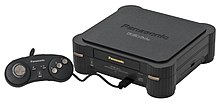
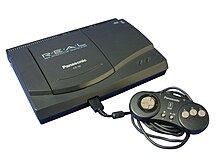
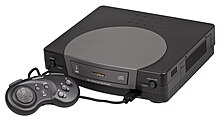

A number of different manufacturers produced the 3DO system. The Panasonic versions are the best known and most common.
- Panasonic FZ-1 R·E·A·L 3DO Interactive Multiplayer(Japan, Asia, North America and Europe) – The first 3DO system, which was initially priced at$699.99in the U.S. and¥79,800 (1994) (equivalent to¥82,875 orUS$760 in 2019)[37]in Japan.[38]The price was reduced to $399.99 in the fall of 1994.[39]
- Panasonic FZ-10 R·E·A·L 3DO Interactive Multiplayer(Japan, North America and Europe) – Released on November 11, 1994 (a year after the FZ-1), it is a redesigned slimmer and lighter model that replaced the FZ-1 in Panasonic's portfolio. The FZ-10 featured a top loading CD tray and an internal memory manager. The controller is also smaller and lighter than the one included with the FZ-1 as it lacks a headphones connector.
- Panasonic N-1005 3DO CD Changer "ROBO"(Japan only) – An FZ-1 custom console, fitted with a five disc CD drive.
- GoldStar GDO-101 Alive 3DO Interactive Multiplayer(South Korea) – Released in mid-1994, this model is similar in physical appearance to the Panasonic model.
- GoldStar GDO-101M 3DO Interactive Multiplayer(North America and Europe) – A version of the GDO-101 for foreign markets.
- GoldStar GDO-202 3DO Interactive Multiplayer(Korea and Europe) – An updated version of the GDO-101. CD-ROM drive replaced with one similar to that of the FZ-1 style.
- GoldStar GDO-203 3DO Alive II(South Korea only) – Replaced the GDO-202 in late 1995, but was discontinued shortly thereafter. Had a centered, top-loading CD tray.
- Sanyo IMP-21J TRY 3DO Interactive Multiplayer(Japan only) – Released in March 1995, this model has the pickup head on the tray (resembling a laptop optical drive).[40]It was made in moderate quantities before it was discontinued.
- Creative3DO Blaster– APCISAexpansion card with a double-speed CD-ROM drive and a controller that enables compatible Windows-based PCs to play 3DO games.
- Arcade–American Laser Gamesutilized 3DO-based hardware for a number of arcade titles.[41]
- DMB-800– Manufactured exclusively for the Korean market, after the purchase of the Opera hardware in 1997 by Samsung.[11]This multipurpose unit could be used for 3DO software, VCD playback, and karaoke.[42]
Hardware
[edit]The original edition of the console, the FZ-1, was referred to in full as the3DO REAL Interactive Multiplayer.The console had advanced hardware features at the time: anARM6032-bitRISCCPU,a custom graphics processor with a math co-processor, and a custom 16-bit DSP with a 20-bitALU.It also featured 2megabytes(MB) ofDRAM,1 MB ofVRAM,and a double speedCD-ROMdrive for mainCD+GsorPhoto CDs(andVideo CDswith an add-onMPEGvideo module).[4]The 3DO included the firstlight synthesizerin a game console, converting CD music to a mesmerizing color pattern.
Theoptical discformat for 3DO software uses a proprietaryfile systemnamed Opera.[43]The 3DO is one of few CD-based units that feature neitherregional lockoutnorcopy protection,making it easy to useillegal copiesorhomebrewsoftware.[44]Although there is no regional lockout for 3DO systems, a few Japanese games cannot be played on non-Japanese 3DO consoles due to a specialkanjifont which was not present in the English language console firmware. Games that have compatibility issues includeSword and Sorcery(which was released in English under the titleLucienne's Quest),Twinkle Knightsand a demo version ofAlone in the Dark.
Technical specifications
[edit]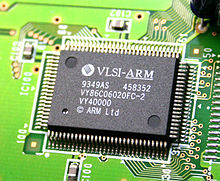
- Processor
- 32-bit RISC CPU @ 12.5 MHz (ARM60) – using VY86C060-20FC / VY86C06020FC-2 (native stock speed of 20FC chips is @ 20 MHz.)
- Display
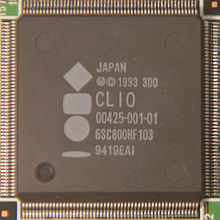
- Resolution 640×480 (interpolated), 320×240 (actual) 60 Hz for NTSC version, and 768×576 (interpolated), 384×288 (actual) 50 Hz for PAL version with either 16-bit palettized color (from 24-bit) or 24-bittruecolor.
- Dual pixel engine (CEL engine) capable of producing 9–16 millionpixelsper second (36–64 megapix/s interpolated), distorted, scaled, rotated and texture mapped.
- Custommath co-processor(physically located inside MADAM)
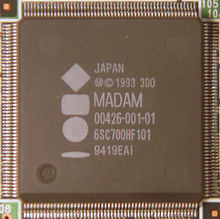
- System board
- 200 MByte/s (50 million words a second) Bus clocked at 50 MHz
- 36DMAchannels
- 2 MB of main RAM[1]
- 1 MB ofVRAM[1]
- 2 expansion ports
- 32 KBSRAM
- Sound[46]
- 16-bit stereo sound[1]
- StereoCDDAplayback.
- 44.1 kHz sound sampling rate[1]
- Supports 4-ChannelDolby Surround sound
- Custom 16-bitdigital signal processor(DSP) with 16-bit I/O and registers but a 20-bit ALU and accumulator, embedded in the CLIO chip.
- 13 DMA channels of digital input, to be sampled, and distorted by the DSP.
- Media
- Double-speed 300kB/s data transfer CD-ROM drive with 32 KB RAM buffer
- Multitasking32-bitoperating system
Connectivity
[edit]Audio and video
[edit]- RF switchAnRF connectorcan be used with older TVs that lack direct video inputs. The 3DO output is compatible with most existing video console switches, including those made for the NES/SNES, Sega Master System/Genesis, & NEC Turbo Grafix RF. This provides a relatively low quality but universally compatible video signal.
- Composite RCAThe 3DO features standard composite video and audio ports (yellow/red/whiteRCA connectors) that are compatible with off the shelf cables also used on VHS players and certain other video devices and games consoles, as well as older computer video monitors.
- S-VideoThe 3DO also offers anS-Videoconnector for enhanced picture quality on more advanced televisions.
Power
[edit]All 3DO consoles have integrated power supplies. Some models (Panasonic 3DO FZ-1, Sanyo TRY 3DO, and Goldstar 3DO) have hardwired power cords, others (Panasonic 3DO FZ-10) use anIEC 60320 C7"figure 8" power cord. All North American model specifications are AC 120 V 60 Hz 30 W.
Basic accessories
[edit]
Most 3DO systems shipped with a standard controller, as well as A/V and power cables. The 3DO controllers were unusual in that the system base unit contained only one controller port and the controllers could be physicallydaisy chainedtogether via a port on the back of each controller. Up to eight controllers could be linked together in this fashion. All controllers for each 3DO console are compatible with one another.
In addition, standard 3DO controllers released with the Panasonic FZ-1 also contained a headphone jack and volume control for silent play. The GoldStar (LG) model also included a controller with this feature.
Third party controllers were produced by a number of companies includingLogitech.World International Trading Corporation also released an adapter that allowsSuper NEScontrollers to be used with the 3DO.[47]
Light gun
[edit]The only light gun released for the 3DO was theGamegun,a product of third-party developerAmerican Laser Games.Despite this, no fewer than 10 games with light gun support were produced for the system. Most of these were arcade ports from American Laser Games (includingMad Dog McCree), butVirgin InteractiveandDigital Picturesalso released 3DO light gun games.
The 3DO Gamegun uses the same design as the Gamegun released for theSega CD:an orange "Old West"revolver.Select Gameguns house a controller port so that another Gamegun may be daisy-chained for two-player gameplay, which is supported in most of American Laser Games's 3DO titles.
Though no light gun was released for the 3DO in Japan, the Japanese localizations ofDemolition ManandCorpse Killerretain light gun support, and could be played by Japanese gamers using imported Gameguns.
Mouse
[edit]Panasonic and Logitech both released the 3DO mouse. The Panasonic FZ-JM1 and Logitech 3DO mouse are identical aside from their markings. Fewer than 20 games supported its use, some of which were optimized for the standard controller or light gun rather than the mouse. Of the 3DO games which were optimized for use with the mouse, the best known areMystandLemmings.The Panasonic mouse was also bundled with Konami'sPolicenautsLimited Edition in Japan which came with a Policenauts mouse pad.[48]
Other
[edit]Home Arcade Systems released a steering wheel for the 3DO which is supported by several racing titles, includingThe Need for Speed.
The Panasonic FZ-EM256 is a 256 KB Expandable Memory Unit that plugs into the 3DO expansion port on the back of the console. It was released in 1994 and sold in Japan only.[12]
The Panasonic 3DO Karaoke Mixer allows 3DO owners to play a standard music CD, turn the vocals down, plug in one or two microphones and sing over the music. This unit was released in limited markets.[49]
Games
[edit]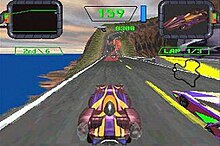
Some of the best-received titles were ports of arcade or PC games that other systems of the time were not capable of playing, such asAlone in the Dark,MystandStar Control II.Other popular titles includedTotal Eclipse,Jurassic Park Interactive,Gex,Crash 'n Burn,Slayer,Killing Time,The Need for Speed,Road Rash,andImmercenary.The 3DO version of arcade titleSamurai Shodownwas the only port with faithful graphics for some time, and the 3DOSuper Street Fighter II Turbowas the first port with its CD-quality audio.
Since its release coincided with the arrival of the modernfirst-person shooter,the 3DO also had some of the earliest members of the genre as exclusives, such asEscape from Monster Manor,the previously mentionedKilling Time,andPO'ed,as well as ports ofWolfenstein 3DandDoom.
However, the 3DO library also exhibited less successful traits of home consoles at the time. The 3DO was one of the first CD-ROM consoles, and some early titles on the 3DO frequently attempted to useinteractive movie-style gameplay. Such titles rendered all or nearly all of their graphics in full motion video, which necessitated that any interactive influence from the player be limited to a greater extent than other games of the time. Some games followed a single unfolding of events simply bycorrectly timed promptsexecuted by the player.Night Trap,D,Mad Dog McCree,andThe Daedalus Encounterare among the more famous examples of full motion video driven games.
Reception
[edit]Reviewing the 3DO,GameProgave it a "thumbs sideways". They commented that "The 3DO is the first CD-ROM system to make a real jump forward in graphics, sound, and game design." However, they questioned whether it would soon be rendered obsolete by the upcomingJaguar CDand "Project Reality" (later released as theNintendo 64)[note 2]and felt there were not yet enough games to justify a purchase, recommending that gamers wait several months to see if the system would get a worthwhile library of games.[50]The 3DO was awarded Worst Console Launch of 1993 byElectronic Gaming Monthly.[51]In a special Game Machine Cross Review in May 1995,Famicom Tsūshinwould score the 3DO Real console a 26 out of 40.[52]Next Generationreviewed the 3DO in late 1995. They noted that due chiefly to its early launch, it had a larger installed base and more high quality games than the newly launchedSaturnandPlayStation,making it a viable alternative to those systems. However, they debated whether it could remain a serious contender in the long run, in light of the successor M2's imminent release and the Saturn and PlayStation's superior hardware. They deemed the 3DO hardware overhyped but still very good for its time, especially praising theDMAengine. They gave it 2 out of 5 stars, concluding that it "has settled out as a solid system with some good titles in its library and more on the way. The question that must be answered though is this: Is having a 'good system' enough?"[1]
Citing a lack of decent exclusives and an "astronomical asking price", in 2009 video game websiteIGNchose the 3DO as its 22nd greatest video game console of all time, slightly higher than theJaguarbut lower than its four other major competitors:Super NES(4th best),Genesis(5th), PlayStation (7th), and Sega Saturn (18th).[53]OnYahoo! Gamesthe 3DO was placed among the top five worst console launches due to its one-game launch lineup and high launch price.[25]
Gaming retrospectives have also accused the 3DO of having an abundance of poor qualityinteractive movies.[54]Trip Hawkins' business model for selling the 3DO was widely derided by industry figures.[55]
Legacy
[edit]The 3DO Company designed a next-generation console that was never released due to various business and technological issues. TheM2project, which began as an accelerator add-on for the 3DO,[56]was to use dualPowerPC602 processors in addition to newer 3D and video rendering technologies. Late during development, the company abandoned the console hardware business and sold the M2 technology toMatsushita.
See also
[edit]- 3DO Rating System
- CD-i– a similar but more open specification that also focused on gaming
- List of commercial failures in video games
- List of 3DO games
Notes
[edit]- ^Sales figures forGexremain unclear. While the October and November 1995 issues ofGameProandElectronic Gaming Monthlyboth state thatGexexceeded 1 million in sales in July 1995 (well before the game was released for any platform other than the 3DO), an article inNext Generationalso cover-dated November 1995 says that the 3DO Interactive Multiplayer had sold only 750,000 units worldwide.[7]
- ^Though the Jaguar CD and Nintendo 64 would not be released until 1995 and 1996 respectively, at the time the media thought they would both be released in mid-1994.
References
[edit]- ^abcdefg"Which Game System is the Best!?".Next Generation(12).Imagine Media:36–85. December 1995.
- ^"3DO comes to the High Street - in a juggernaut!".Wokingham Times.September 1, 1994. p. 12.Archivedfrom the original on December 15, 2023.RetrievedDecember 14,2023.
The latest contender for the next generation of games formats, the Japanese giant Panasonic, is to launch its CD-based Real FZ-1 3DO Interactive Multiplayer today (Thursday).
- ^"Panasonic 3DO FZ-1 manual".Archive.org.RetrievedApril 25,2018.
- ^abcd"3DO – 1993–96 – Classic Gaming".Classicgaming.gamespy. Archived fromthe originalon April 15, 2012.RetrievedJuly 31,2012.
- ^"At the Deadline".GamePro.No. 85.IDG.October 1995. p. 174.
- ^"Tidbits...".Electronic Gaming Monthly.No. 76. Sendai Publishing. November 1995. p. 19.
- ^"75 Power Players: The Evangelist".Next Generation.No. 11.Imagine Media.November 1995. p. 56.
Global sales stand at around 750,000, with 300,000 sold in the US.
- ^"NG Special: 3DO".Next Generation.No. 7 (published July 1995). 1995. p. 37.
- ^"Trip Hawkins: Interactive Messiah?".3DO Magazine.1994 [Winter 1994]. p. 11.
- ^ab"3DO: Hardware".Edge Special Edition.1995. pp. 54–58.
- ^abcWriter, CBR Staff (April 29, 1997)."SAMSUNG BUYS OUT 3DO'S HARDWARE SYSTEMS BUSINESS FOR $20M".Tech Monitor.Archivedfrom the original on January 23, 2023.RetrievedJanuary 26,2023.
- ^abcdefghiMatthews, Will (December 2013)."Ahead of its Time: A 3DO Retrospective".Retro Gamer.No. 122.Imagine Publishing.pp. 18–29.
- ^Vinciguerra, Robert."Tom Kalinske Talks About His Time Overseeing Sega As Its CEO In the 90s; Reveals That Sega Passed On Virtual Boy Technology, Considered Releasing 3DO".The Rev. Rob Times.Archived fromthe originalon October 25, 2015.RetrievedSeptember 21,2015.
- ^"New 3DO Hardware Deals"(PDF).GamePro.No. 59.IDG.June 1994. p. 184.Archived(PDF)from the original on October 9, 2022.
- ^ab"3DO News".GamePro.No. 60.IDG.July 1994. p. 170.Archivedfrom the original on September 20, 2020.RetrievedApril 2,2020.
- ^"No Business Like Show Business".GamePro.No. 57.IDG.April 1994. p. 8.
- ^Nichols, Peter (December 3, 1993)."Home Video".The New York Times.Archivedfrom the original on June 24, 2016.RetrievedApril 9,2017.
- ^Markoff, John (September 9, 1993)."Market Place; Investors can only guess which video game device will conquer".The New York Times.Archivedfrom the original on July 27, 2018.RetrievedApril 23,2010.
- ^Ramsay, M. (2012).Trip Hawkins.Gamers at Work: Stories Behind the Games People Play(pp. 1–15). New York: Apress.
- ^"3DO Prices Drop".GamePro.No. 58.IDG.May 1994. p. 168.
- ^"3DO System Down to$500!".Electronic Gaming Monthly.No. 57. Sendai Publishing. April 1994. p. 18.
- ^abCole, George (July 1994). "Giant killer?".Personal Computer World.pp. 410–414.
- ^"Atari Jaguar Unveiled—Stalks 3DO".Computer Gaming World.November 1993. pp. 10–11.Archivedfrom the original on March 16, 2016.RetrievedMarch 28,2016.
- ^"Problems in 3DO Land!".Electronic Gaming Monthly.No. 53. Sendai Publishing. December 1993. p. 16.
- ^ab"The Best -- and Worst -- Console Launches".Yahoo! Games. November 8, 2013.RetrievedJanuary 30,2014.
- ^"3DO Sales Called Pleasing".The New York Times.November 20, 1993.Archivedfrom the original on May 26, 2015.RetrievedNovember 25,2019.
- ^Ogasawara, Nob (May 1995)."International News"(PDF).Electronic Gaming Monthly.No. 70. Sendai Publishing. p. 82.Archived(PDF)from the original on October 9, 2022.
- ^Miller, Chuck; Dille, H. E.; Wilson, Johnny L. (January 1994)."Battle Of The New Machines".Computer Gaming World.pp. 64–76.Archivedfrom the original on December 14, 2019.RetrievedNovember 2,2017.
- ^"The Face of the Future".Computer Gaming World(advertisement). December 1993. pp. 32–33.Archivedfrom the original on March 19, 2016.RetrievedMarch 29,2016.
- ^"The" Other "System".GamePro.No. 77.IDG.December 1995. pp. 204–6.
- ^"3DO Powers Up".GamePro.No. 64.IDG.November 1994. p. 272.
- ^ab"Goldstar Drops 3DO"(PDF).Electronic Gaming Monthly.No. 80.Ziff Davis.March 1996. p. 18.Archived(PDF)from the original on October 9, 2022.
- ^"3DO's Downhill Slide Begins".GamePro.No. 84.IDG.July 1996. pp. 16–17.
- ^"Tidbits"(PDF).Electronic Gaming Monthly.No. 88.Ziff Davis.November 1996. p. 21.Archived(PDF)from the original on October 9, 2022.
- ^International Herald Tribune.
{{cite news}}:Missing or empty|title=(help) - ^"The World According to Trip".Next Generation.No. 22.Imagine Media.October 1996. pp. 6–12, 159, 161, 163, 165.
- ^1868 to 1938:Williamson J.,Nominal Wage, Cost of Living, Real Wage and Land Rent Data for Japan 1831-1938,1939 to 1945:Bank of JapanHistorical StatisticsAfterwards, Japanese Historical Consumer Price Index numbers based on data available from the Japanese Statistics Bureau.Japan Historical Consumer Price Index (CPI) – 1970 to 2014Retrieved 30 July 2014. For between 1946 and 1970, from"Chiêu cùng chiến sau sử".RetrievedJanuary 24,2015.
- ^"Matsushita Brings 3DO to the Far East".GamePro.No. 57.IDG.April 1994. p. 176.
- ^Markoff, John (December 11, 1994)."For 3DO, a Make-or-Break Season".New York Times.Archivedfrom the original on July 27, 2018.RetrievedDecember 31,2007.
- ^"The Sanyo Try".Next Generation.No. 7.Imagine Media.July 1995. p. 38.
- ^"American Laser Games Tech Center".Dragon's Lair Project.Archivedfrom the original on January 29, 2009.RetrievedAugust 14,2019.
- ^"DMB-800".3DO Archive.October 19, 2019.RetrievedMarch 15,2024.
- ^"FAQ - 3DO Interactive Multiplayer Frequently Asked Questions List v5.3".3DO Today.February 10, 1999.
- ^"3DO Today".3DO Today.Archivedfrom the original on June 25, 2009.RetrievedJuly 31,2012.
- ^"Which Game System is the Best!?".Next Generation(12).Imagine Media:36–85. December 1995.
- ^"Audio Hardware".Arts Union.Archivedfrom the original on August 11, 2018.RetrievedAugust 11,2018.
- ^"New Adapter Allows Any Super NES Controller to Be Used on 3DO".Electronic Gaming Monthly.No. 65. Sendai Publishing. December 1994. p. 68.
- ^"[3DO] Policenauts Limited Mouse Box & Pilot Disk".Akiba-Games.Archived fromthe originalon July 19, 2013.RetrievedNovember 18,2013.
- ^"Panasonic 3DO".Video Game Console Library.Archivedfrom the original on August 7, 2013.RetrievedNovember 18,2013.
- ^"System Shopper"(PDF).GamePro.No. 53.IDG.December 1993. pp. 46–49.Archived(PDF)from the original on October 9, 2022.
- ^"Electronic Gaming Monthly's Buyer's Guide".Electronic Gaming Monthly.1994.
- ^GAME MACHINE CROSS REVIEW: 3DOリアル. Weekly Famicom Tsūshin. No.335. Pg.167. 12–19 May 1995.
- ^"3DO is number 22".IGN.Archivedfrom the original on September 7, 2009.RetrievedJuly 31,2012.
- ^Matthews, Will (December 2013). "Ahead of its Time: A 3DO Retrospective".Retro Gamer.No. 122.Imagine Publishing.pp. 24–25.
- ^Kent, Steven L.(2001).The Ultimate History of Video Games: The Story Behind the Craze that Touched our Lives and Changed the World.Roseville, California: Prima Publishing. p.486.ISBN0-7615-3643-4.
- ^"3DO Press Release".Cs.cmu.edu. August 24, 1994.Archivedfrom the original on September 29, 2020.RetrievedJuly 31,2012.
